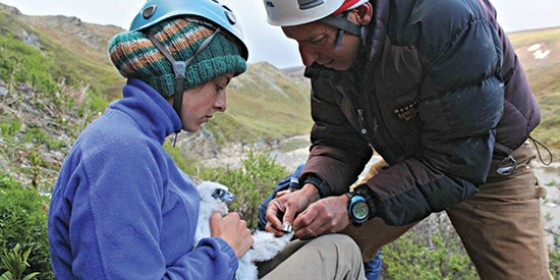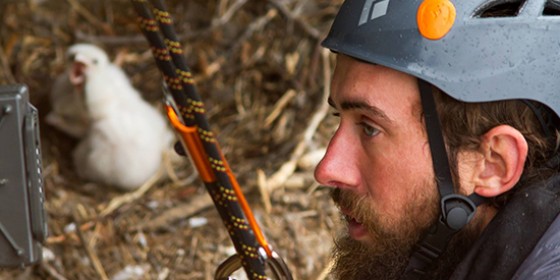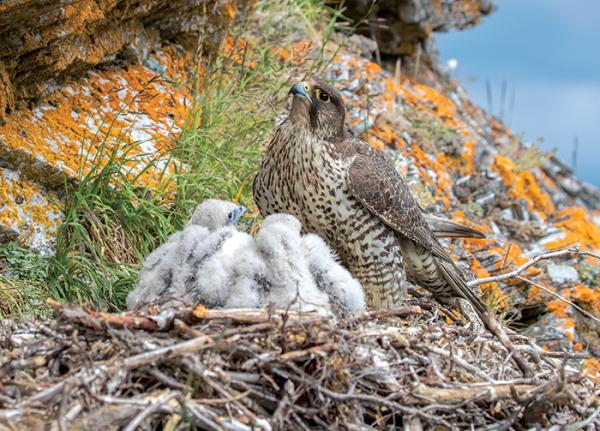Not only is the Gyrfalcon the largest falcon on Earth, it’s also one of the few animals adapted to harsh Arctic winters. Unfortunately, it is also considered the North American bird species most vulnerable to climate change.
Fascination with Gyrfalcons is deeply rooted in The Peregrine Fund’s history: Tom Cade, our founder, was among the first to publish research about them. Later, our long-term studies in Greenland revealed new information about the species. As climate change concerns began to mount, we already had the unique expertise, partnerships, and data to address the unknown. We hosted an international conference in 2011, then convened the Tundra Conservation Network to connect partners from all eight Arctic countries and multiple disciplines.
Threats to Gyrfalcons


Neil Paprocki
Collaboration is vital for saving this species, which has been studied in isolated pockets for centuries thanks in part to the Gyrfalcon’s popularity with falconers. We launched the Polar Raptor Databank in 2017 to collect historical and new data in a secure repository, and concurrently published Applied Raptor Ecology, a manual that sets standards for gathering comparable, high-quality data. From anywhere in the world, researchers can now record unlimited observations and access real-time analysis tools. As data are accumulated and shared, ecologists can then answer questions about global population trends and identify factors that have the greatest impact on Arctic raptors.
Our fieldwork is contributing surprising findings to this body of work using motion-activated cameras at Gyrfalcon nests on Alaska’s Seward Peninsula. Observing prey items in the photos, we have found that Gyrfalcons rely heavily on ptarmigan, but also adapt their diet when ptarmigan numbers decrease. Cameras documented one female Gyrfalcon moving her young out of a falling nest and carrying it to a new location. We also met some “visitors” to the nests, including grizzly bear, red fox, wolverine, and ravens.
Our fieldwork will continue long-term, as will collaboration with researchers worldwide who are invited to a Symposium on Arctic Raptors at our headquarters in 2020. Ultimately, we will synthesize all shared knowledge about Gyrfalcons into an adaptive management plan to energize conservation action around the world. Acting on sound science, together we will be the difference between survival and extinction for this icon of the Arctic.
Watch this short video, made by our Gyrfalcon biologists, to learn more about this project:







